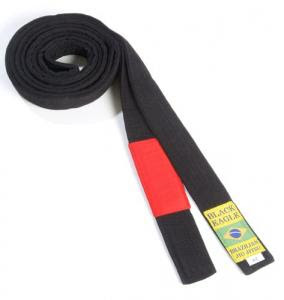Belt me Up ...

I have just returned from a round of seminars in Sydney ths past weekend. One particularly nice moment was when I was able to present Sam Dignam (in WIndang) with his Brown Belt. As my good friend Dave Meyer says, "You don't get a Belt in BJJ - you BECOME the belt!" Belt's are easy to get - you head to the store and hand over your $5 and you can get one of any colour you like - but to BECOME a BJJ Blue, Purple, Brown or Black Belt - well, this is another matter entirely.
The way I see it, the four different BJJ belts represent four very different stages of the students evolution ... and those stages are as follows:
BLUE: the Foundation ...
This stage is perhaps the most important in the journey as it provides the foundation upon which we load everything else we ever lear, In this stage, the student internalizes strong basics for every position on the ground. A good blue belt should have something to say about most positions that he or she will encounter during a grappling match. The better this foundation, the better the the blue belt - and as the saying goes, a technical Blue Belt will make for a technical Black Belt!
PURPLE:
This is the 'selfish' stage of the BJJ journey. By this time, the student has been exposed to a lot of technique and strategy. From this ever-expanding storehouse of knowledge, the student is beginning to really construct a 'personal game'. He or she fully understands their preferences, and is very clear about their 'go to' techniques for all positions that occur during the groundfight. Also, by this stage, the student has some working knowledge of takedowns - as e or she feels very confient of controlling the fight once it goes to the ground. We call it the selfish stage because it is all about the construction adn development of a personal game from the vast technical dta-bank that he or she has been exposed to by that time.
BROWN:
This is the apprentice 'teacher' stage - and as such is anything but 'selfish'. As a Brown Belt the student has a wealth of knowledge on wide variety of positions. By this time, the student has a 'depth' of knwledge on a wide vaiety of subjects, and not just a cursory or shallow understanding. The student, by this stage, should also know a lot about positions and techniques that he or she may personally not use in their 'game' - as an apprentice 'instructor', they can expect to be asked for help from people who are developing very differnet games from those they use themselves - and so, they must understand and be able to teach things that they may not necessarily like or use themeselves. Brown Belts are really junior black belts.
BLACK:
This is the instructor stage. The BJJ Black Belt, should pretty much have answers to most of the problems that occur on the ground. They should have a satrong working knowledge of takedowns and be able to deal with both sporting and 'real world' assault scenarios. The Black Belt should also have efective and powerful coaching/teaching skills - and be able to bring others along the path to Black Belt. The BJJ Black Belt should also have a good understanding of how the various ground techniques and positions relate to each other, they should be able to build unique combinations and solve unusual problems - all of these skill-sets, along with a profound understanding of applied bio-mechanics and leverage make the BJJ Black Beklt one of the most prestigious, sought-after and respected martial arts qualifications. perhaps, above all though - the BJJ Black Belt has returned full circle to the 'open' and 'eager for knowledge' student mind-set - the true BJJ Black Belt knows that his or her journey is always 'just beginning'.
JBW


Comments
Kind Regards
Felipe